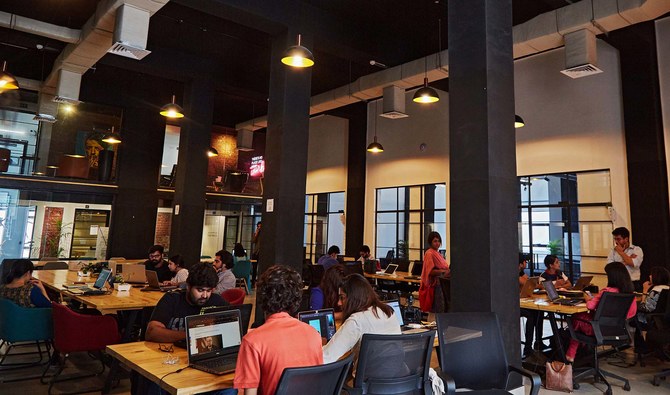Flexible Working Arrangements have been a hot topic since the pandemic, and with good reason.
Employees are clamouring for flexible working options, which are essential for any company looking to attain and keep top talent internationally. This is especially true abroad as companies experience a shortage of skilled workers willing to follow the corporate culture and timing.
Locally, many established companies are adopted flexible working models, and many offer employees a 4-day working week, with the 5-day being an optional work-from-home day. Along with the benefits for employees, flexible working also has many benefits for companies. The main of which are cost savings and a higher productivity level.
We will explore the most popular flexible work arrangements (and how they can be optimized according to an organization’s needs). We also look at the benefits of building more flexibility in your workplace strategy.
The Benefits Of A Flexible Work Arrangement
Flexible work arrangements are popular because of a simple reason, and they are what most employees want.
Flexibility is the fastest-rising priority for workers. Employees are simply no longer willing (or able) to work for a company that is not aligned with their values and personal lives. This desire for flexibility occurs across all generations in the workplace. Especially with Millennials (who will make up to 75% of the global workforce by 2025). Specifically, 78% of Millennials report switching jobs for one offering a better work-life balance alone.
Flexibility is undeniably linked with better well-being. A major study found that adopting a flexible schedule decreased work stress by 20% while increasing the likelihood of job satisfaction by 62%.
Independence Pays Off
This isn’t surprising since giving employees more flexibility often comes down to treating them like the adults they are. Not every position or industry can have complete flexibility. But ultimately, the more flexibility on offer, the more autonomy, and empowerment in the workplace.
This greater autonomy can lead to more productivity, more employee engagement, better staff retention, less absenteeism, and an improved employee and workplace experience.
In this way, offering greater flexibility can also unite with business needs.
Flexibility in working schedules and times also reduces hiring costs and, additionally, a steep reduction in office costs. In addition, if flexible working includes remote working, such flexible initiatives reduce commuting costs and related stress.
The Challenges Of Flexible Working?
Not every organization can give all employees complete flexibility, and some jobs always require constant and regular physical presence and interactions among team members. There are good and bad ways to implement hybrid work and other types of flexible work arrangements.
When executed poorly, hybrid and other flexible working models can impact company culture negatively. Or they can generate or aggravate inequalities between employees. For example, if some employees don’t have a safe and reliable home workspace or if managers only promote in-office employees.
Ultimately, the benefits of flexible work arrangements will only be realized when the organization is completely committed to supporting all workers and creating a unified employee experience. Whenever and wherever and however they’re working. This requires a commitment from leadership to create a culture that includes and supports everyone on the team.
Such a culture usually requires teamwork between IT, HR, and FM teams. Human resources will create official policies that support all types of workers. This is, of course, along with communicating and updating them as necessary. Flexible working models require the company to improve its communication channels and flow of information drastically. All employee groups need to be included.
6 Emerging Examples of Flexible Work Arrangements
While flexible work arrangements will look different from company to company, at their heart, they share one main quality. They are beyond the traditional 9-to-5, in-office plan that we’ve typically associated with full-time work.
For some companies, this can be a flexible work schedule, job sharing, or a compressed work week. For others, it’s flexible work locations (maybe with telecommuting) or creating a more dynamic workspace.
And frequently, it’s a combination of any or all of these:
1. Four-day workweeks
Just because working Monday to Friday is embedded in how we think about work doesn’t mean it’s the only option. Or even the best one. More companies are exploring four-day workweeks, often with great results.
Four-day workweeks tend to follow two models:
• Four 10-hour days, with everyone getting the 5th day off (usually Fridays)
• The 100:80:100 model, where employees get 100% of their pay and benefits for working 80% of the time/4 days a week; in return, they’re expected to give 100% effort still
The latter is based on the idea, increasingly backed by research, that output is more important than hours logged. When employees have a better quality of life (and more time to recharge), they can do better (and more) work in a shorter period.
2. Reduced Hours- More Options
While working four days a week is a promising solution for many people, it’s not the only way to reduce hours.
Some workers, like those with caregiving responsibilities, usually benefit more from shorter work hours overall rather than a shorter workweek.
Find what works for your company and team. Some employers have found that having different work hours (often a half day on Fridays) works better for them.
Research shows that employee experience scores jump from 45% to 74% when employees are free to choose when and where they work. Ultimately, the onus is now on companies to find a work arrangement that works with their work culture. In other words, you need to find the right solution for your team.
3. Flexible Hours
Not every company can or should dive into reducing the hours their staff members work. But that doesn’t mean there aren’t other flexible arrangements they can explore.
Namely, many companies now allow for hybrid work schedules. Or for employees to figure out when their eight hours a day will actually be.
Sometimes referred to as flextime, they still work 40 hours a week—but not necessarily the classic 9-to-5. This can be useful for employees with childcare duties or other time-consuming responsibilities outside of work.
Companies may still institute core hours when they want everyone to be onsite or online. But outside those hours, employees will get to choose when their workday starts and ends.
4. Remote Working
The benefits of working remotely are many (similar to flexible working arrangements). It now goes without saying that telework can be just as productive and meaningful as anything at the office. However, this assumes employees have the right tools, technology, and, most importantly, work ethics to support it.
Companies that cannot offer flexibility regarding when employees work may want to consider flexibility around where they work.
Moreover, companies that ‘unofficially’ switched to remote working because of lockdowns may now want to consider making things more official.
5. Flexible Vacation Time
Even if working your dream job in a dream company with a dream company culture, people still need time off to recharge and reconnect with their loved ones. Productivity doesn’t come from people clocking in and clocking out like zombies. Instead, it comes from people who are engaged and present.
Leadership is catching up with what employees have known for a long time: burnout is real. And, on the flip side, when you’re happy and well-rested, you can do much more and much better work. And often in a shorter amount of time.
This is where flexible vacation time is emerging as a motivator, with some companies experimenting with unlimited vacation days.
Vacations have always been an important employee benefit. Usually, one that accrued over time (often creating a lot of extra paperwork for HR). in our new, more flexible reality, companies are experimenting with new ways to approach time off. This can look like flexible time off (or flexible PTO), which doesn’t accrue. And which employees generally can take off whenever they choose to cover both vacation and sick days.
However, when companies don’t implement it properly, flexible vacation tends to be underused more than it is overused or abused. So companies need to be clear about their policy and ensure employees are empowered to take advantage of it. This often sets a minimum number of vacation days that employees must take each year.
Given the costs associated with turnover, allowing employees to take extended time off is often the smart decision for many companies.
6. Dynamic Workspaces
Various work environment forms offer more flexibility to how we use the office or the worksite. For example, activity-based working, agile working, and office neighborhoods all reimagine the workspace in ways that give power back to employees. They do this by putting employees in the driver’s seat regarding where they sit and who they sit with.
Despite their many benefits, these work types also add a layer of complexity to the physical office.
What Are The Four Types Of Flexible Work Plans?
With the prevalence of both hybrid and flexible working, many people use the terms interchangeably.
But hybrid working is just one type of flexible working. And it can look quite different from organization to organization, depending on their goals.
While there’s theoretically an unlimited number of flexible working plans, we are seeing four hybrid work models emerging. They are traditionalists, architects, nomads, and pioneers. Where a company falls will depend on both its real estate goals and how much flexibility they’re willing and able to give employees.
While all these models require their own separate game plans to optimize properly, they also all need the tools below to work optimally.
Tools To Support Workplace Flexibility
Creating a flexible work arrangement starts with trust. Companies have to trust their employees to do the work. As the pandemic made crystal clear, employees don’t need to be sitting in the office with a manager breathing down their necks to do their best work. In fact, people can be more productive when they can determine what work should look like for them.
Of course, you can only trust people to do the right thing when they know what it actually is. That’s why we always emphasize the importance of clear communication around expectations.
Companies may also want to consider smaller pilot trials before committing to any major changes. And they should be willing to adapt based on data and feedback. For this reason, workplace leaders need good reports and analytics to see how new strategies work. Capturing employee sentiment is also essential when making any changes to working arrangements. For instance, many men prefer working from offices rather than home.
Tools For The Digital Workspace
Companies need to create a safe and secure digital workspace all employees can access anywhere, at any time. They will likely also need any and all of the following tools:
- Desk booking and room booking software to make it easy for everyone to access the right physical spaces when they need them
- A visual directory that shows employees where all their coworkers (and other resources) are at a given time
- A request management system that makes it easy for employees to submit requests, even remotely
- Digital communication tools such as Microsoft Teams, Slack, and Zoom (Zoom meeting calendar integration is also handy)
- Digital collaboration tools such as Google Docs or Asana
- Up-to-date wayfinding signage in the physical office, especially when dealing with hybrid workers who are only in the office part-time.
Many companies now also offer stipends to employees to help them establish a more comfortable and efficient home office environment.

Sadia Zaheer holds a Masters in Business Administration from IBA, Karachi. After working in several financial institutions in Client Management, Corporate Lending, Islamic Banking and Product Management she jumped careers to pursue a career in writing.
She is a Finance, Business and HR Development writer with four years of experience. She reads a lot and takes care of her multiple cats to remain calm.



